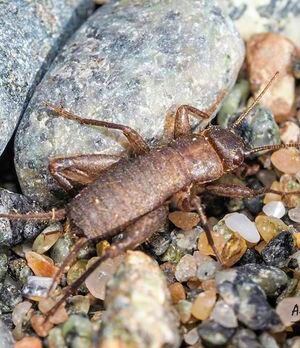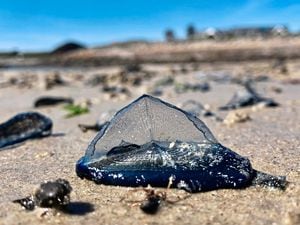Rare cricket could see inert waste site change
THE rare and vulnerable scaly cricket could lead to a change in the option for a new inert waste site.

Spur Point, at the north of Belle Greve Bay, is currently the preferred site, once the Longue Hougue land reclamation area is full.
But concerns have been raised about the loss of the habitat after the cricket, which has been found in only a few places in Great Britain, was photographed on the beach by nature photography enthusiast Andy Marquis.
Project manager Denice Carling said that as part of the site selection and planning process a detailed environmental impact assessment would be carried out.
‘The purpose of such a study is to understand the potential effects of any development, including on flora and fauna, as well as the extent to which they can be mitigated or managed,’ she said.
‘That will form part of any future planning application. A lot of undeveloped areas of the island, including coastal habitats, are home to particular species of wildlife or plant life.
‘We had previously been made aware of the presence at Spur Point of the scaly cricket, which we understand is also to be found in other areas of the coast along the north of the island. We would therefore expect it to be considered as part of the detailed environmental impact assessment for the site.’
However it is not certain that the bay will be used.
Mrs Carling said an EIA would be carried out at a second location.
‘This will be from the short list of potential sites for inert waste that were previously identified, before Longue Hougue South was selected as the preferred way forward,’ she said.
Mr Marquis runs the Guernsey Wildlife and Nature Photography website to display his work. He is a Licentiate of the Royal Photographic Society and is working towards his Associateship.
‘These nocturnal crickets live in a niche habitat on shingle and pebble beaches and in recent years have only been found on the beach near Spur Point,’ he said.
‘All wildlife has a purpose and as much a right to be there as anything else. They are thought to feed on decaying organic matter and so help in cleaning up such things. They will also be predated by other animals and are therefore part of the food chain.’
He said in the UK the crickets had only been seen on Chesil Beach, in Dorset, Branscombe Beach, in Devon, and Marloes Sands, in Pembrokeshire.
‘Guernsey being able to compete with these huge well-known beaches is significant and shows off the biodiversity and importance of protecting our wildlife,’ he said.





